Introduction to Ship Ballast Operations
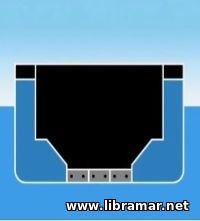
First, let us look at what ballast operations are and their purpose. Since the ship's draft is shallow while in ballast condition, it is susceptible to wind and wave impact - as a result, rolling increases and hull stability deteriorates. To improve hull stability, the ship's ballast tanks are filled with sea water. When loading the ship with cargo, sea water is discharged. Such sea water loading and discharging are called ballast operations which are conducted either by gravity or ballast pumps. Improper handling of pumps and/or valves may result in various accidents.
Valves are provided where the pipeline is connected to ballast tanks. The pipeline is fitted with many such valves. 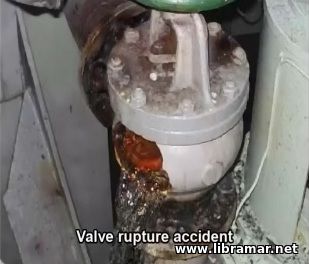 Improper valve opening or closing can cause accidents. Improper valve opening or closing can cause accidents. This is an example of an accident caused by valve rupture. In this accident, corrosion of the valve body combined with the sudden pressure change due to pumped stuck ruptured the valve body during the stroke. To prevent such accidents, you must have good understanding of the procedures for proper handling of pumps and valves.
Improper valve opening or closing can cause accidents. Improper valve opening or closing can cause accidents. This is an example of an accident caused by valve rupture. In this accident, corrosion of the valve body combined with the sudden pressure change due to pumped stuck ruptured the valve body during the stroke. To prevent such accidents, you must have good understanding of the procedures for proper handling of pumps and valves.
Water Head Pressure
Water Head Pressure is a vital factor affecting ballast operations, expressed by the term water head pressure. Let us consider a ten-meter tall water column. As one cubic centimeter of pure water weighs one gram, a ten-meter tall water column with the base plane of one square centimeter is equivalent to 1000 grams, or 1 kilogram. Therefore the water pressure placed on the base plane is one 1 kg per sq.cm. This pressure is referred to as ten meter water pressure head. In other words, water pressure head means pressure translated from the height of the water column.
When the water level inside the ballast tank is higher 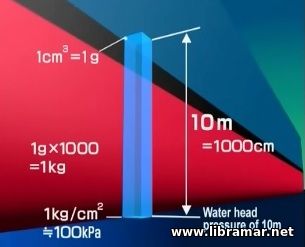 than that of the sea water outside, ballast water can be discharged by gravity, thanks for the water pressure head inside the tank. Discharging by gravity stops when water pressure head becomes zero as the tank's water level comes down to the same level as the sea water outside. To continue to discharge further it is necessary to use a pump pushing the water with the pressure higher than that at the sea surface. Cargo is loaded under this condition. As cargo is unloaded and the water level inside the ballast tank becomes lower than the sea surface, ballast water is gravity-filled into the tank, thanks to water pressure head of the sea water. Ballast filling stops when the sea water pressure head becomes zero, i.e. the ballast water level rises to become equal to that of the sea surface. To continue to fill ballast water further, it is necessary to pump water in with the water pressure head higher than that inside the tank.
than that of the sea water outside, ballast water can be discharged by gravity, thanks for the water pressure head inside the tank. Discharging by gravity stops when water pressure head becomes zero as the tank's water level comes down to the same level as the sea water outside. To continue to discharge further it is necessary to use a pump pushing the water with the pressure higher than that at the sea surface. Cargo is loaded under this condition. As cargo is unloaded and the water level inside the ballast tank becomes lower than the sea surface, ballast water is gravity-filled into the tank, thanks to water pressure head of the sea water. Ballast filling stops when the sea water pressure head becomes zero, i.e. the ballast water level rises to become equal to that of the sea surface. To continue to fill ballast water further, it is necessary to pump water in with the water pressure head higher than that inside the tank.
Principle of the Pump
There are various pump types. Centrifugal pumps are commonly used in ship ballast operations. With centrifugal pumps a motor is used to rotate a vane wheel called an impeller. The centrifugal force that is generated is used to send water out. Let us have a look at this principle.
Put some water in cylindrical container and turn it around container's axis as a centre of rotation. The centrifugal force works on the water and pushes it towards the container's walls making water surface form a parabolic arch. As the rotation speed is increased, the centrifugal force becomes stronger to such an extent that the water goes over the container's brim and spills out. If the overflow is collected at this time, and at the same time the spaces created in the bottom of the container throw in the water continually, the water rises from the bottom to the top of the container. This explains the principle of the centrifugal pump.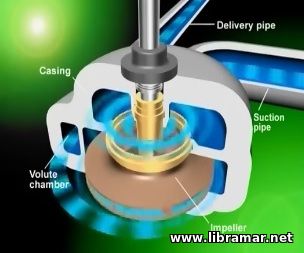
With actual pumps, when the impeller is rotated at a high speed and the case is full with water, pressure at the impeller center area drops. Then, pushed by the atmospheric pressure, the water is allowed to flow into the pump through a suction pipe. The water which is being splashed by the impeller centrifugal force gathers in the volute casing and gains in pressure before flowing out of the delivery pipe.
Pump Head and Discharge Amount
The height to which a pump sucks up water is called pump head. The height from the pump's base plane to the water suction level is called suction head, while the height from the pump's base plane to the water discharge level is called discharge head. The total of both heads is called total pump head, meaning the height to which the pump actually transfers water from a low water level to a high level. A pump's performance capability can be expressed in terms of relation between total pump head and discharge amount. As shown here, the points where total pump head and the discharge amount cross, form a curve peculiar to each pump.
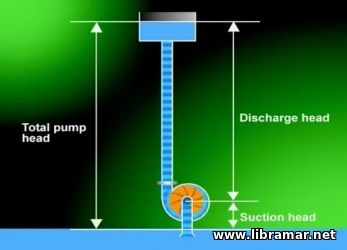 When the total pump head is high, the discharge amount becomes small because greater pressure head is required. As the total pump head comes down, the required pressure head decreases and the discharge amount increases. Pump output refers to an amount of work with which a pump pushes up certain discharge amount of water to a certain pump head. The relation between the pump output and discharge amount also shows the pump's performance capability.
When the total pump head is high, the discharge amount becomes small because greater pressure head is required. As the total pump head comes down, the required pressure head decreases and the discharge amount increases. Pump output refers to an amount of work with which a pump pushes up certain discharge amount of water to a certain pump head. The relation between the pump output and discharge amount also shows the pump's performance capability.
Cavitation
Cavitation is one of several phenomena you shall avoid in operating cargo pumps. When water flows fast through a pipe, the pressure falls below the water's vapor pressure causing vapor bubbles to form. As they collect, these vapor bubbles create a cavity, a phenomenon known as cavitation. When these bubbles break, they produce vibrations which cause abrasion. Repetition of vibrations leads to damage of the pump.
Water boils at 100 C under 1 atm, or 0.1 MPa, but on top of mountain Fuji the water boils the atmospheric pressure drops to 0.06 MPA causing water to boil at 97 C. The critical pressure which a liquid begins to boil under certain temperature is called a saturation vapor pressure for that temperature. The lower the saturation vapor pressure, the lower the boiling point. In other words, vapor bubbles in cavitation occur when the water pressure is low.
When it comes to pumps, cavitation is likely to occur in areas around the impeller. Bubbles can cause abrasion and vibration can damage the impeller. Typical damage of pumps due to cavitation includes decreased pump efficiency, decreased discharge flow, and noises and vibration which eventually make it impossible to continue operating the pump. Impact pressure promotes corrosion and abrasion of the impeller, leading to shorter pump life. To prevent cavitation, raise the pump's suction pressure. In terms of pump operation, decrease the pump's discharge flow by reducing the discharge valve opening. To raise the suction pressure, decrease the suction line resistance. With some ships, suction line resistance is decreased by keeping valves on the suction side fully open at all times - the opening is not reduced.
The "Read Later" function allows you to add material to this block with just one click. Just click on the icon and read the articles that interest you at any convenient time.


